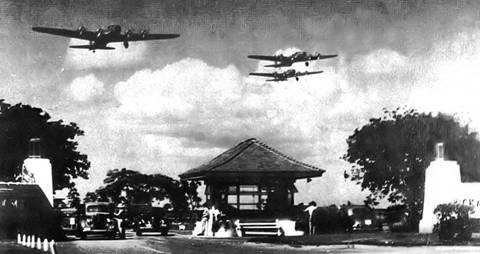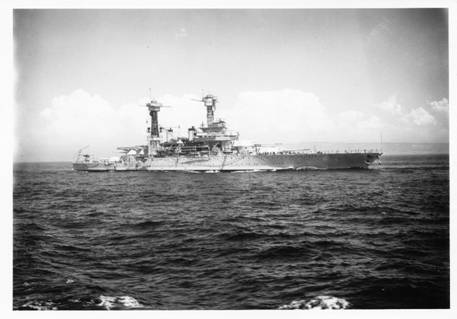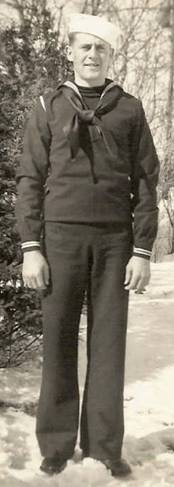From Hicksville to Oahu
Two young servicemen from Hicksville were caught in the attack. These are their stories.
Cleveland John Dodge
In December 1939, Europe was already at war.That month, 19 year-old Cleveland Dodge, Jr. of West Marie Street enlisted in the Navy.No doubt his father, active in Hicksville's Veterans of Foreign Wars Post, understood - he had served many years in the Navy himself, including a long stretch during World War I when his ship and its crew were interned in Constantinople (now Istanbul ).
Following training in Newport , Rhode Island , young Dodge was assigned to the flagship of the country's Battle Fleet, the "Tennessee Class" California .The battleship was 624' long, it could sail up to 9,000 miles without refueling, and it carried a crew of 1,400.In calm seas, it could fire 14" diameter explosive shells a distance of about 20 miles.Really.By December 1941, Dodge was a Seaman 1st Class, assigned to one of the ship's magazines - a place far below deck where ammunition was stored, until it was time to send it via hoists up to the California 's guns.
|
|
|
U.S.S. California |
*
|
|
|
|
S1c Cleveland John Dodge |
PFC John T. Haughey |
*
John T. Haughey
John Haughey grew up in a large family on Third Street. After completing his studies at St. Ignatius School, he went on to Hicksville High School.John was one of eleven seniors who graduated in January 1940.Two months later, he enlisted in the Army, and soon found himself stationed in Hawaii as part of the Army Air Corps (the first incarnation of the Air Force).He was based at then-new Hickam Field, about a mile from Battleship Row, where he lived in the three-storey Consolidated Barracks.John was assigned to the 50th Reconnaissance Squadron of the 11th Bomber Group as a radio operator.His unit flew new B-17D bomber aircraft, in which it was training for long-distance missions over the Pacific, missions intended to monitor and photograph Japanese activity.
John quickly developed a fondness for flight; he wrote to his family about the flying classes he was taking at the University of Hawaii .His letters even mentioned the possibility of his being transferred back stateside for Air Corps pilot training.

1941: Main Entrance to Hickam Field, with B17Ds overhead
Bowman, B-17 Flying Fortress Units of the Pacific War
***




